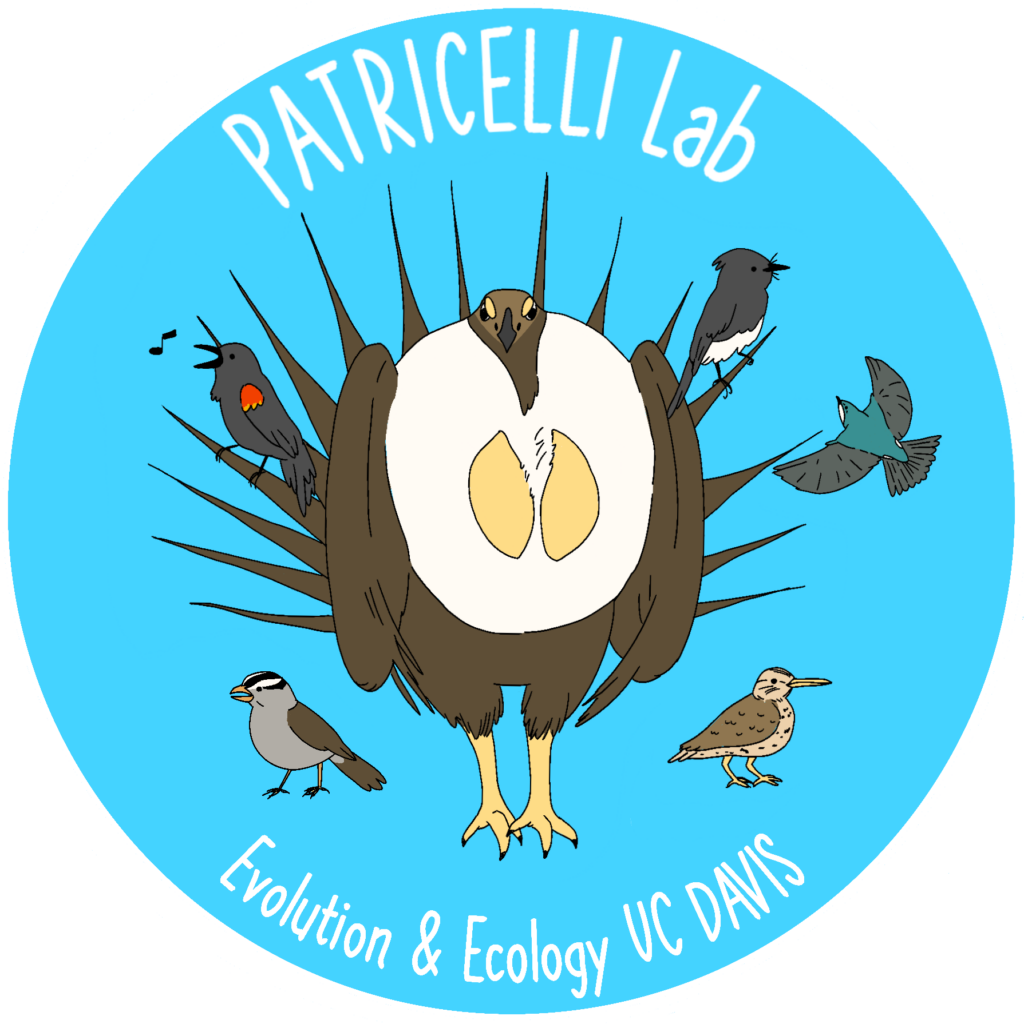
Dustin completed his PhD in Ecological and Evolutionary Biology in 2013 at Indiana University with Dr. Ellen Ketterson. His dissertation research focused on investigating the function and evolutionary significance of low-amplitude (whispered) vocalizations in songbirds with a particular emphasis on dark-eyed juncos (Junco hyemalis). Dustin currently has joint appointments in the Patricelli lab at UC Davis and Dr. Preston S. Wilson’s research group in the mechanical engineering department at UT Austin. His position is funded by a NSF Postdoctoral Fellowship to foster research and collaborations at the intersection of biology and mathematics. Dustin’s current research is aimed at optimizing a radio-telemetry system to serve as a novel method for measuring how loud birds are singing during completely free-living behavioral interactions.
E-mail Contact
Links
Dustin’s Personal Website: https://sites.google.com/site/dustingreichard/
Google Scholar: http://scholar.google.com/citations?user=TyJ1jhgAAAAJ&hl=en
Dustin’s Publications:
Reichard, D.G. and Welklin, J.F. in press. On the existence and potential functions of low-amplitude vocalizations in North American birds. The Auk: Ornithological Advances.
Whittaker, D.J., Reichard, D.G., Drouilly, M., Battle, K., and Ziegenfus, C. in press. Avian olfactory displays: a hypothesis for the function of bill-wiping in a social context. Behavioral Ecology and Sociobiology.
Reichard, D.G. 2014. Male dark-eyed juncos (Junco hyemalis) respond differentially to playback of local and foreign song. The Wilson Journal of Ornithology 126: 605-611. PDF
Rosvall, K.A., Peterson, M.P., Reichard, D.G., and Ketterson, E.D. 2014. Highly context-specific activation of the HPG axis in the dark-eyed junco and implications for the Challenge Hypothesis. General and Comparative Endocrinology 201: 65-73. PDF
Reichard, D.G., Rice, R.J., Schultz, E.M., and Schrock, S.E. 2013. Low-amplitude songs produced by male dark-eyed juncos (Junco hyemalis) differ when sung during intra- and inter-sexual interactions. Behaviour 150: 1183–1202. PDF
Rosvall, K.A., Reichard, D.G., Ferguson, S.M., Whittaker, D.J., and Ketterson, E.D. 2012. Robust behavioral effects of song playback in the absence of testosterone or corticosterone release. Hormones and Behavior 62: 418–425. PDF
Reichard, D.G. and Ketterson, E.D. 2012. Estimation of female home-range size during the nestling period of Dark-eyed Juncos. The Wilson Journal of Ornithology 124: 614–620. PDF
Reichard, D.G., Rice, R.J., Vanderbilt, C.C., and Ketterson, E.D. 2011. Deciphering information encoded in birdsong: male songbirds with fertile mates respond most strongly to complex, low-amplitude songs used in courtship. The American Naturalist 178: 478–487. PDF
Whittaker, D.J., Reichard, D.G., Dapper, A.L. and Ketterson, E.D. 2009. Behavioral responses of nesting female Dark-eyed Juncos Junco hyemalis to hetero- and conspecific passerine preen oils. Journal of Avian Biology 40: 579–583. PDF
O’Neal, D.M., Reichard, D.G., Pavlis, K. and Ketterson, E.D. 2008. Experimentally-elevated testosterone, female parental care, and reproductive success in a songbird, the Dark-eyed Junco (Junco hyemalis). Hormones and Behavior 54: 571–578. PDF
Reichard, D.G. and Price, J.J. 2008. Species recognition in a vocal mimic: repetition pattern not the only cue used by Northern Mockingbirds in discriminating between songs of conspecifics and Brown Thrashers. The Wilson Journal of Ornithology 120: 717–724. PDF
Back to the Postdocs page
